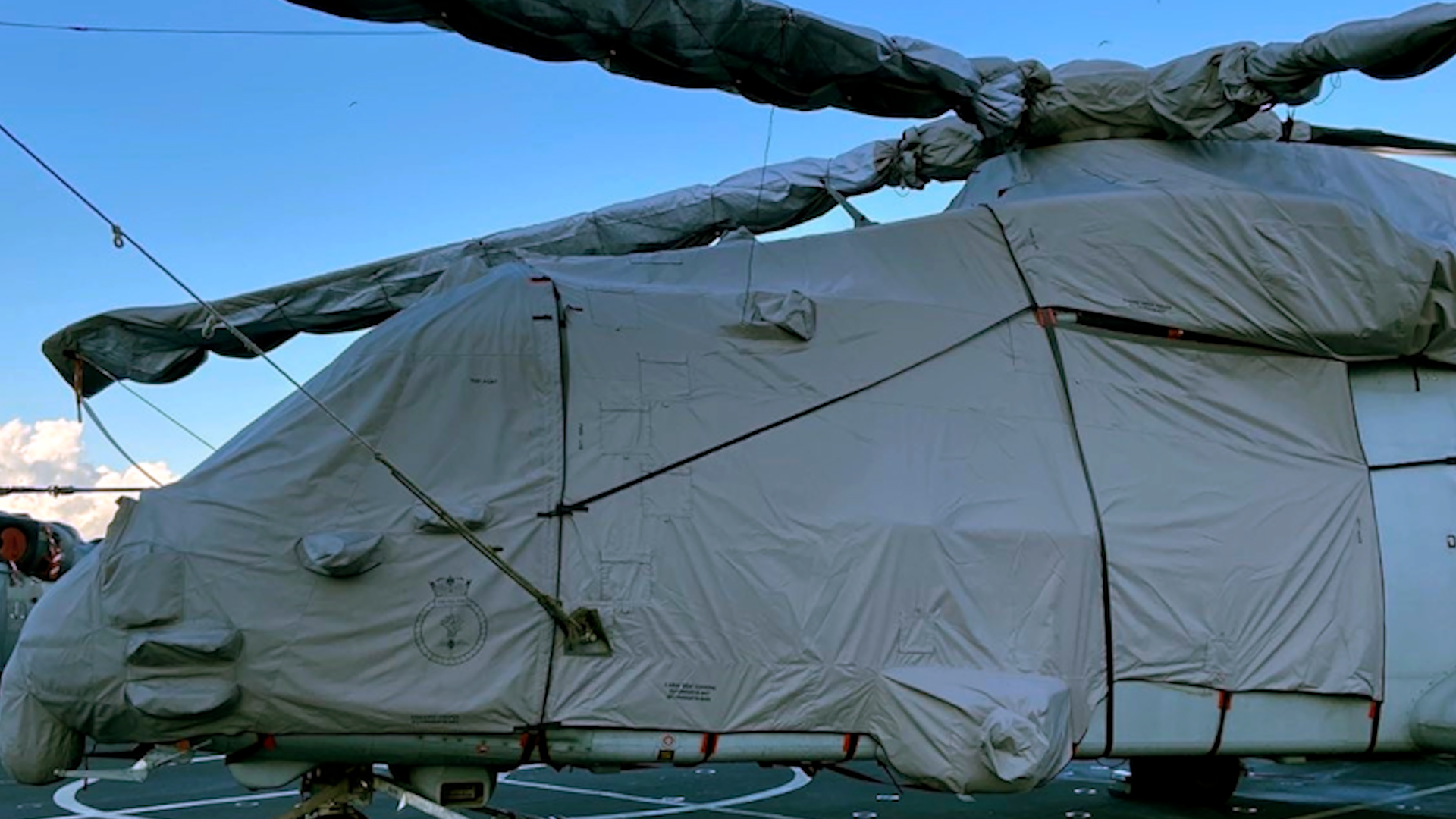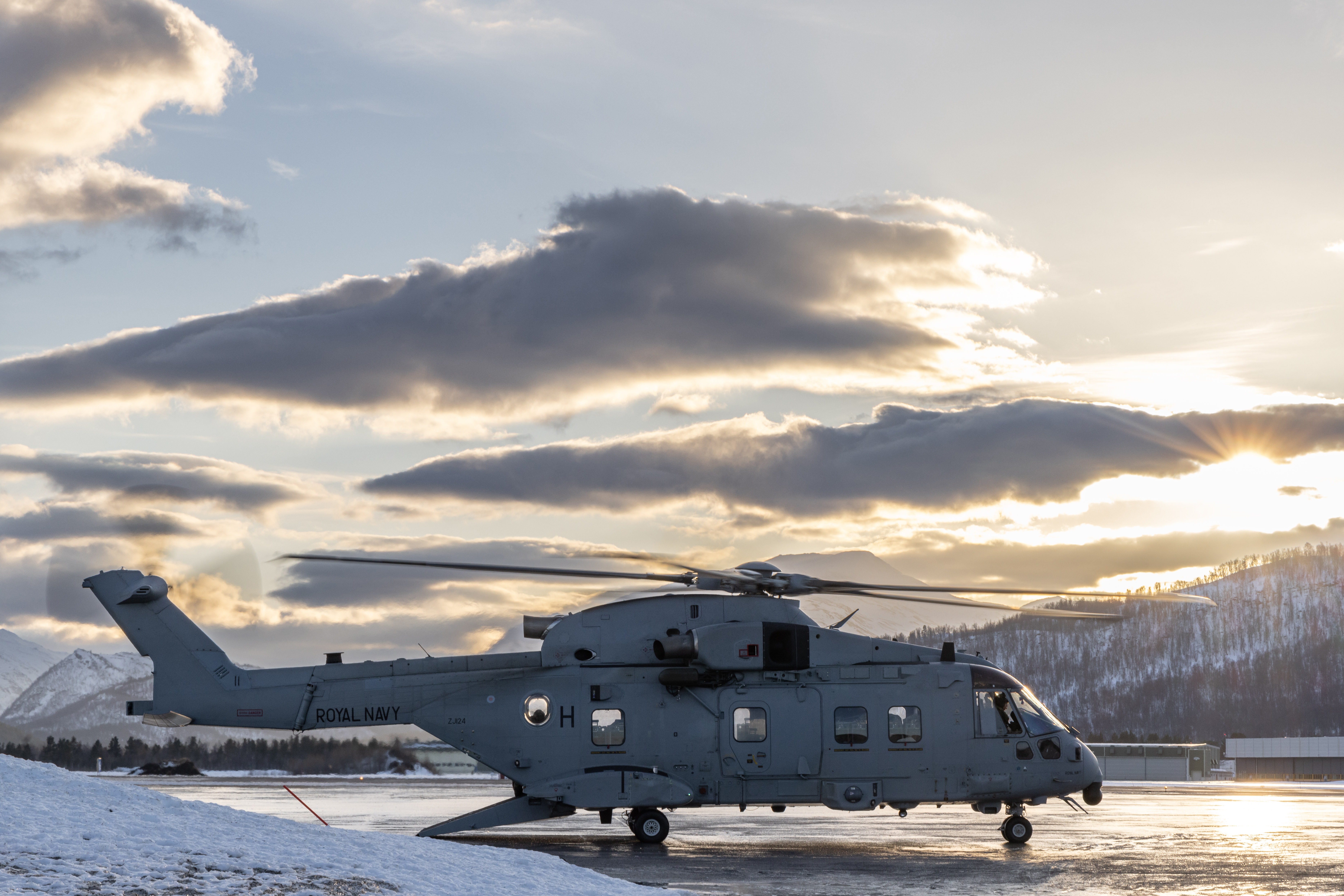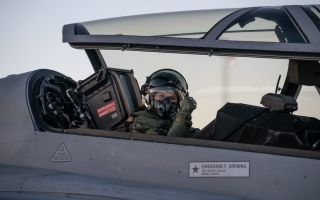
Royal Navy Merlin helicopters fitted with 'onesies' to guard against extreme weather

Royal Navy helicopters are using new protective covers to shield them in extreme environments.
The large 'onesies', or cover sheets, are spread over the critically important parts of multimillion-pound Merlin helicopters, to guard them against harsh Arctic, jungle or desert weather conditions.
Officially known as 'Extreme Cold Weather covers', they can be placed over the helicopter's nose, cockpit, cabin, engine and rotor blades in under an hour, to protect the aircraft from temperatures as low as -60° Celsius or as high as 80°C.
This allows the helicopters to scramble in minutes and accompany Royal Marines wherever they deploy in the world.
The Merlins, based at Royal Naval Air Station Yeovilton, are expected to fly into harm's way to carry Marines and their kit into action.
This winter, the helicopters are deployed to Bardufoss in Norway – deep inside the Arctic Circle – where hangars can be used, but they also need to be able to operate in the field with no facilities and no shelter from the elements for extended periods of time.
The 'onesies' were tested for the first time when the Merlins flew to Norway. Bad weather forced three of the helicopters to divert to another smaller airfield.

Pilot Lieutenant Andy Duffield said: "Imagine attempting to put a cover onto a star-shaped duvet, whilst wearing oven gloves, and stood on a stepladder in a blizzard.
"It took under an hour to have all three aircraft wrapped up.
"The efficiency of the engineers prevented both damage and delay: within minutes of being on the ground, the snow began to fall – snow which would quickly become ice once it made contact with the airframe and rotor blades.
"Ice on any airframe is problematic due to the weight it adds and changes it makes to the aerodynamics."









